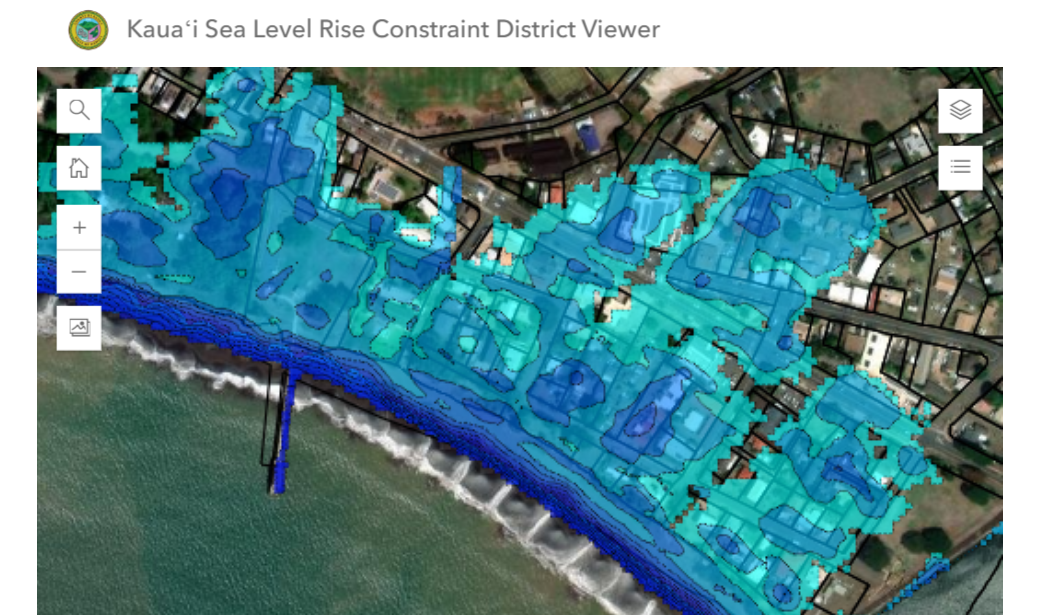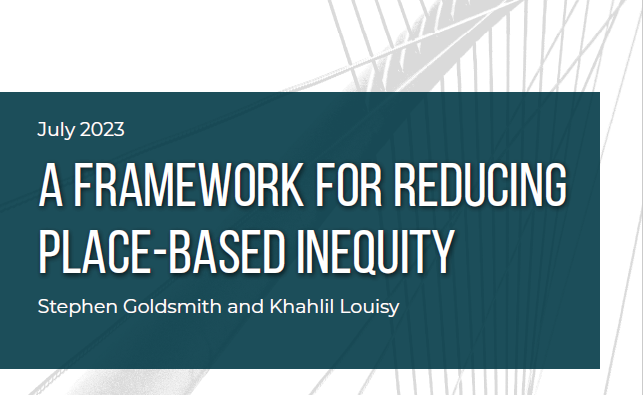- June 3, 2019
- Data Visualization
The Widening Wealth Gap
The causes and consequences of income inequality have been heavily debated in the U.S. for decades, and is also one of the most divisive political debates among voters today. Regardless of what the political left or right believes to be true about what causes economic inequality, one fact is undeniable: the income gap between US’s top earners and everyone else is growing with no signs of slowing down. The following graph from the Center on Budget and Policy Priorities show the evolution of the wealth gap since the late 1940s.
According to leading economists and researchers, the primary drivers of wealth inequality include:
- Declining tax progressivity
- Technological advances
- Decline in union membership
- Decline in real value of the minimum wage, and
- Globalization
While each of these factors contributes in some capacity to the rise in wealth inequality, recent studies by researchers at MIT, the University of Illinois, and the University of Michigan suggest that housing inequality is the leading cause of wealth inequality. When referring to housing inequality, these researchers are talking about the higher cost of some houses over the cost of others.
Housing as a Primary Driver of Wealth Inequality
As jobs, people, and investments flood into cities at increasingly higher rates, the demand for residential and commercial space goes up faster than the supply can support. Zoning ordinances have become stricter to share valuable real estate between residents and businesses; however, this further inhibits cities from growing their housing supply to drive down costs. As housing costs shoot up as a result, lower wage workers are often priced out of their neighborhoods with no hopes of building equity in a home that could one day be leveraged to move up the economic ladder. Over the long term, this trend further exacerbates inequality in cities and continues the cycle of poverty.
To make matters worse, black families that own homes or rent in black neighborhoods are hurt disproportionately worse than other demographic groups. Historically racist housing policies like racial covenants that barred black people from purchasing homes in white neighborhoods, and the redlining of black neighborhoods considered too risky for mortgage lending, have had a lasting impact on housing inequality to this day.
Researchers at the Brookings Institute attempted to measure racial disparities in the price of housing and found that “after accounting for factors such as housing quality, neighborhood quality, education and crime, owner-occupied homes in black neighborhoods are undervalued by $48,000 per home on average, amounting to $156 billion that homeowners would have received if their homes were priced at market rates.” With these losses comes lost tax revenue for cities that could be used to invest in these neighborhoods, and black families are robbed of over $150 billion that they could use to climb the economic ladder.
To visualize the causes and consequences of housing inequality in their city and influence modern housing policy, researchers in Minneapolis have turned to maps to tell the story of how the city’s early 20th century housing policies have exacerbated inequality well into the 21st.
Mapping Prejudice in Minneapolis Housing
Minneapolis is a fast-growing city with a progressive reputation. It is currently ranked sixth on the US News & World Report’s 2019 Best Places to Live list, sixth in the US on WalletHub’s list of the best cities to start a career, and is currently ranked the best place in the mid-west for real-estate investment opportunities. In the midst of its largest population growth since the 1920s, all signs point Minneapolis toward continued growth and opportunity.
As Minneapolis has grown, it has earned a reputation as a “miracle” city for its incredible ability to “mix affordability, opportunity and wealth.” Minneapolis ranks in the top 10 in highest median earnings as well as top 10 in lowest poverty rates for residents under 35. It is also second in the country for the most affordable place for low income families to rent and commute to work. All this in addition to being host to 19 Fortune 500 company headquarters and a plethora of job opportunities for young, college-educated professionals.
While Minneapolis has so far been able to build wealth and maintain affordability in ways many major US metropolitan areas have not, the growth in wealth and opportunity in the city has not been equitable for everyone. In 2016, Kirsten Delegard, director of the Historyapolis Project, wanted to dig into Minneapolis’ past following discussions with local community members about areas of the city where Jewish people were barred from owning homes. Further housing segregation work by the Seattle Civil Rights and Labor History Project and the University of Richmond Digital Lab inspired the launch of the Mapping Prejudice project.
The Mapping Prejudice Project began by searching for anti-Semitic language in the city’s old property deeds to find where Jewish people were explicitly banned from owning (or occupying) specific properties. This search uncovered language not prohibiting Jews from owning certain properties, but actually banning “Japanese, negro, Mongolian, and colored” people as well as some deeds specifically noting they “could only be transferred to those of the Caucasian race and Aryan branch.” Primarily, racial covenants in Minneapolis focused on keeping black residents concentrated in a few very small neighborhoods away from whites. This kind of language in property deeds is otherwise known as “racial covenants.”
The Minnesota State Legislature banned “restrictive covenants” in 1953, but the practice continued in parts of Minneapolis as well as the rest of the country until the passing of the Fair Housing Act in 1968. Even then, some restrictive covenants have found a way to live on into the 21st century. To visualize the spread of racial covenants in Minneapolis housing during the first half of the 20st century, Delegard and her team created the following map.
In addition to racial covenants, black families in Minneapolis were also victim to redlining, the practice used by the Home Owners’ Loan Corporation (HOLC) of classifying mortgage lending risk for certain urban residential areas based on the racial makeup of those neighborhoods. As seen in the map below, the “hazardous” red areas were neighborhoods made up of a majority of “people of color, immigrant groups and Jews.” Yellow zones were classified as “declining.” Using these classifications, banks refused loans for homes in those areas to prevent people of color from owning property and building wealth. This practice was also made illegal by the Fair Housing Act of 1968, but was continued in many areas of the country after its passing and has had a lasting impact on poor families and families of color to this day. The following interactive map shows the history of redlining in Minneapolis-St.Paul.
By the time Minneapolis put an end to the practice of racial covenants or HOLC redlining, the destiny of the city’s neighborhoods had already been set, doing permanent damage to the hopes of achieving racial equity. Today, despite Minneapolis’ reputation as a progressive city with abundant opportunity, it holds the title for the lowest African-American homeownership rates in the United States. To put numbers into perspective, 78 percent of white families in Minneapolis own the home they live in, versus 25 percent of black families, and the demographic makeup of Twin City neighborhoods set by racial covenants and redlining largely persists to this day.
Minneapolis Makes Sweeping Changes to Zoning Laws
As noted by the Mapping Prejudice team on their website, “we cannot address the inequities of the present without an understanding of the past.” These very powerful visualizations shed light on an injustice largely undiscussed in the history books of Minneapolis and city officials have started to take action.
In December 2018, after two years of gathering public input, the Minneapolis City Council passed the Minneapolis 2040 plan by a 12-1 vote. As the public spoke, one common theme emerged: “as the city grows, everyone must benefit from that growth.” Specifically, the final draft submitted to the Metropolitan Council is being hailed as an “opportunity to undo barriers and overcome inequities created by a history of policies in our city that have prevented equitable access to housing, jobs and investments.”
The plan’s goals include eliminating disparities, giving every resident access to quality affordable housing, and complete neighborhoods where all residents will have access to life’s necessities. The plan lays out 100 policy strategies that will help achieve these goals, 11 of which are directly related to addressing housing quality and inequity. Some of these policies include:
- Innovative Housing Types
- Mixed Income Housing
- Housing Displacement, and
- Affordable Housing Production and Preservation
One policy included in the plan is of particular importance to addressing housing inequality: the complete elimination of single-family zoning. After zoning laws defined by race were deemed unconstitutional in 1917, single-family zoning was used to keep black families out of white neighborhoods by limiting housing availability and driving up costs. This new plan will allow for up to three dwelling units per residential structure in all neighborhoods throughout Minneapolis, creating a significant opportunity to bolster the supply of housing.
The Metropolitan Council deemed the first draft of the 2040 plan incomplete as of January 2019 and a new draft was submitted on May 21 for another round of review. The plan is currently being refined and the fate of housing equality in Minneapolis hangs in the balance, but the latest push to address this wicked challenge is in no small part thanks to the work that has been done to visualize and map the history of racial covenants and redlining since the early 1900s. Time will tell if Minneapolis is able to achieve its ambitious 2040 plans and become the true “miracle” it is supposed to be.








